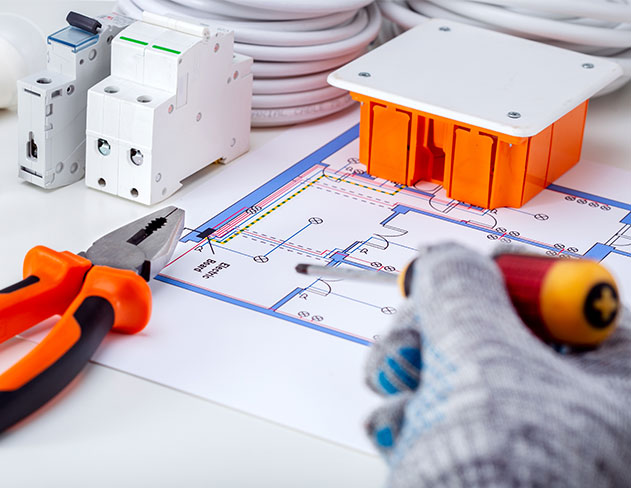The Regulations for Emergency Lighting
What are the regulations for emergency lighting? Proper emergency lighting is crucial for building safety, yet many building owners need to be made aware of the regulations governing these critical systems.
With lives at stake in the event of a crisis, it’s imperative to understand emergency lighting codes to ensure legal compliance and peace of mind.
As a trusted authority in electrical testing, Hexo Electrical Testing emphasises the significance of regulations that enable quicker and safer evacuations.
The Legal Landscape: Understanding the Framework
Emergency lighting regulations evolved from recommendations into legal mandates over decades. Initially, the Lighting Industry Federation and CIBSE authored guidelines advocating emergency lighting in the 1960s. The Health and Safety at Work Act of 1974 required employers to ensure safe working conditions, catalysing emergency lighting standards.
The British Standards Institution laid the groundwork by publishing Code of Practice BS 5266 in 1988, adopted under the Building Regulations in 1992. It established specific emergency lighting requirements for the first time in UK law. Today’s regulations stem from BS 5266 and EN 50172.
The Regulatory Reform (Fire Safety) Order 2005 empowered fire authorities to enforce emergency lighting provisions for non-domestic premises. Compliance is obligatory under the Order. Workplaces, public venues, and residential buildings above two stories require extensive emergency lighting outfitted to proper standards.
Delving Deep: Key Regulations For Emergency Lighting
Installation Standards
Regulations dictate strategic emergency lighting placement. Luminaires must be positioned to adequately light all exit routes, doors, intersections, changes in floor level, and escape signs. Adequate intensity along paths of escape is mandatory.
Emergency lighting regulations specify illuminance and coverage standards based on extensive research. Luminaires must be positioned to properly light exit routes and hazards like stairs or corners. Intersections in corridors require emergency lighting as they present increased risk during evacuation. Standards factor in the likelihood of collisions and falls in poorly lit areas.
Brightness and visibility: The metrics and their significance.
Adequate intensity along paths of escape is mandatory. The illuminance produced by emergency luminaires must meet precise regulatory benchmarks. Open areas require 1 lux, while higher risk stairs and changes in floor level need 2 lux. Escape signs indicating exits need 5 lux for visibility. Higher lighting levels enable quicker and safer evacuations.
Rigorous Maintenance and Testing
The rationale behind the frequency of checks and tests.
While proper emergency lighting installation is vital, maintaining and testing systems regularly helps ensure their dependability. Regulations mandate thorough monthly checks, six-month inspections, and one to three-hour annual durability tests. This rigorous protocol verifies emergency lighting reliability when needed most. It also prevents avoidable system failures.
Documentation: Why it’s more than just paperwork.
Meticulous maintenance and testing documentation provides legal evidence of compliance. Records affirm that emergency lighting receives necessary upkeep. They also aid investigations and insurance claims after incidents. As specialists, Hexo Electrical Testing stresses that documentation is integral, not an afterthought.
Powering Safety: Duration and Battery Backup
The science of duration: Why specific timeframes are mandated.
Regulations dictate emergency lighting must operate continuously for a minimum time frame when mains power fails. Non-maintained luminaires must function for one to three hours. Maintained systems with trickle-charging batteries provide one to eight hours of backup. These durations enable site evacuations based on building types and escape route lengths. They derive from extensive research on evacuation times.
Innovations in battery technology and their impact on regulations.
Progress in battery efficiency allows extended backup duration. Nickel-cadmium batteries are being superseded by nickel metal hydride and lithium-ion alternatives. This enables lower maintenance alongside longer operability. As technology evolves, regulations adjust accordingly to leverage these benefits for safer buildings.
Guiding the Way: Signage and Exit Routes
The psychology behind illuminated exit signs and their strategic placement.
Exit signs must be lit by emergency lighting to clearly indicate escape routes. This aids wayfinding during low or no visibility. Psychologically, people gravitate toward lit signs in emergencies. Proper placement also accounts for sign visibility at different angles of approach. Regulations factor in sign luminance, viewing distance, and location to enable unobstructed escape.
Ensuring clear and visible escape routes: More than just a regulatory mandate.
Lighting for exit routes is an integral emergency lighting requirement. Adequately lit pathways to exits enable safe evacuation and prevent pile-ups or stampedes in darkness. Non-compliant lighting risks delayed evacuations and injuries. Continuous escape route illumination provides ubiquitous visibility without dark spots.
The Interplay of Technology and The Regulations For Emergency Lighting
How regulations adapt to technological advancements.
Emergency lighting standards evolve continuously to leverage innovations. Improved battery performance enabled longer backup durations. Smart luminaires allow centralised monitoring and control. Adjustable optics optimise lighting distribution. Intelligent emergency systems integrate fire alarms for faster response. Regulations absorb advances that enhance safety and compliance.
The future of emergency lighting: Predictions based on current tech trends.
Emerging technologies like LiFi and laser-based lighting could transform emergency illumination. LiFi transmits light signals faster than WiFi, enabling luminaires to double as internet and data sources. Laser lighting offers heightened efficiency and precision. As innovations materialise from proofs of concept to widespread adoption, regulations will evolve accordingly.
Debunked: Common Misconceptions about Emergency Lighting Regulations
Addressing myths and providing clarity.
Misconceptions about emergency lighting compliance are common yet problematic. Debunking myths with facts is critical for safety. For instance, some assume occupancy alone dictates regulatory obligations. However, building purpose and height also determine requirements. Another myth is that records are just bureaucratic necessities, but documentation provides legal proof of diligent maintenance. Regular training ensures personnel stay updated and avoid misguided assumptions.
Highlighting the most frequently misunderstood regulations.
Some of the most misconstrued regulations involve luminaire placement, testing procedures, and backup power duration. Intersections in corridors require emergency lighting, though this is often overlooked. Testing durations and frequencies sometimes need clarification, undermining compliance. Battery backup duration varies based on the type of system, but many assume a one-size-fits-all timeframe. Specialist support is key to understanding nuances.
The domino effect: How one oversight can lead to multiple safety risks.
A single lapse like poor maintenance can jeopardise entire emergency systems. Faulty testing can miss operational deficiencies until disaster strikes. Outdated luminaires provide insufficient illumination. Preventable oversights often cascade, highlighting the need for specialist support in identifying and correcting vulnerabilities.
Hexo Electrical Testing’s proactive approach to preventing non-compliance.
Through robust audits, testing, and risk analysis, Hexo Electrical Testing helps building owners avoid violations. Their detailed inspections verify regulatory adherence. Proactive maintenance prevents oversights becoming safety threats. Continuous staff training provides up-to-date understanding. Their guidance offers peace of mind and compliance.

